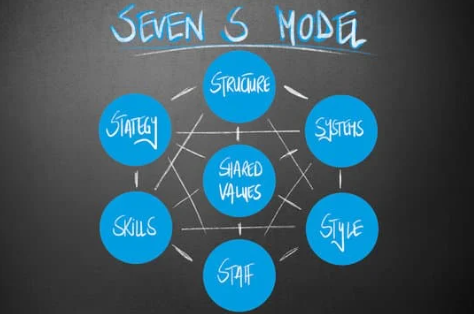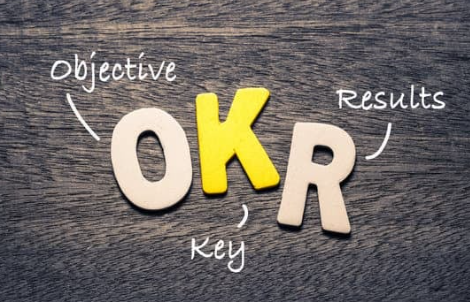Introduction: Changing Business Models

It is a given that most companies in the present day will tell you that there is no better way to succeed than to have the assumption that there is no structure that needs to be followed. However, based on lived experiences, this can be quite a convoluted viewpoint. Businesses employing well-defined frameworks outpace their competitors both in everyday activities and in the long term. This suggests that having an optimum amount of structure improves agility rather than inhibits it.
From a struggling start-up or a fully functional business, success is never dependent on abstract trial and error. But rather, it is always about powering through careful strategy making and repetitive processes. In this article we will analyze the impacts of frameworks in business and how it helps in fostering growth, lowers anxiety, accelerates decision making and generates lasting momentum.
The Business Case for Proven Frameworks

1. Important Insights Based on Frameworks Always Hold True
One of the primary benefits of utilizing frameworks is how they provide logic for your theories, plans, and even day-to-day tasks. Be it managing the marketing funnels, recruiting fresh candidates, or conducting advertising campaigns, well-planned structure helps in evading confusion and eliminating guesswork. It comes down to being under the guidance of strong principles where decisions are not arbitrary and are guaranteed to bear beneficial results.
2. Increasing Scale of Business Interests Without Losing Quality
Growing a business is more effortless if there are established procedures as they assist in maintaining a certain standard of quality. Established guides help you to onboard new hires seamlessly, effectively lessen recurring problems, and enhance teamwork simultaneously. For example, SOPs (Standard Operating Procedures) serve as the foundational benchmark. With the employment of SOPs, businesses can offer a consistent warranty to customers and employees, even with an increase in operational scale.
3. Recovery Strategies During Tough Times
element One that is quite evident is that disasters can occur anytime. If an organization has an assessment identification strategy, it allows for them to recover with great ease. A business can take swift action to many unforeseen setbacks due to identifying key weak elements beforehand and preparing a certain structured response plan for each scenario. Not only do you deal with the problem within the organization, but you also demonstrate to the staff, several partners, and shareholders that the organization is strong and self-sufficient.
Unpacking Core Frameworks: Three Industry Favorites
1. 7S Model: Aligning the Organizational Blueprint.

The seven key elements that make an organization function are separated into seven categories: Strategy, Structure, Systems, Shared values, Skills, Staff, and Style. When all categories are working well together, a collaboration among all people in the organization is created, and the changes in the organization are seamless. That is why the 7s model is very important.
2. OKRs (Objectives and Key Results): Fueling Ambition with Clarity.

OKRs outline a patented and straightforward way of turning broad aspirations into a singular comprehensible target. Teams typically experience a lack of clear objective, but when a company uses OKRs, problems are addressed. This model improves communication because people understand what they are targeting and allows for great creativity. That's why this approach is so effective.
3. Porter’s Five Forces: Navigating Competitive Waters.
With the use of Porter's Five Forces framework,a systematic view of your business environment is achieved. By addressing contemporary suppliers, buyers, competitors, possible substitutes, and new entrants, an understanding of the business environment is grasped easily. This model helps leaders get ahead of emerging threats while noting major challenges to resource allocation and making the most out of possible opportunities.
Why Senior Management Should Focus on Frameworks
1. Remaining Relevant in a Rapidly Developing Environment.
A well-structured framework acts as a safety cushion for a business. With the shift of new law policies and advanced technologies, a well-built framework makes sure that there is a smooth transition and no chaos ensues. Every team is equipped with a proper protocol of risk assessment and strategy adjustment, thus, ensuring that no matter what challenges arise in the ever-changing market, you will always remain sturdy.
2. Accelerating AI Assisted Decisions
AI has the ability to analyze a tremendous amount of data within a short span of time, however, the absence of a structured framework will render the insights useless. The introduction of AI in decision making permits the leaders to discern patterns and trends much quicker, even though the primary schmoozing will still be made by fellow humans. This guarantees more precise predictions and enhanced strategies to deal with responses, all at the speed of light.
3. Improved Governance and Compliance
Every year new laws are proposed and one thing is for sure, omitting them is not a possibility. The frameworks COSO and COBIT lay out a plan of action to remain compliant, enforce internal controls against financial malpractice, and nurture responsibility. By employing advanced governance structures, it is possible to reduce expenses associated with compliance and earn the confidence of customers, partners, and regulators.
Induspect: Your Partner in Structured Success
Induspect understands that a successful operation begins with the right structures in place. Our experts work with you in creating, implementing, and adjusting systems so that they achieve your organization’s objectives. Whether your focus is in process optimization or risk mitigation, we utilize established methodologies as well as proprietary methods to ensure capture of new developments in the field.
Legal Disclaimer
The content provided here is meant for educational and informational use only and is correct to the writer’s best knowledge at the time of writing. The information contained herein has no guarantee of accuracy or relevance in the future, nor does it signify any sort of partnership. Third party resources are owned by their respective owners with all the Intellectual Property Rights, and Induspect does not take responsibility for third party content.
With the use of this material, you agree that Induspect is in no way responsible for any information that is misleading, incorrect or any loss that could potentially occur. If you think any part of this work breaches copyright or trademark, please contact us for timely action.
.jpg?width=1160&name=Untitled%20design%20(11).jpg)